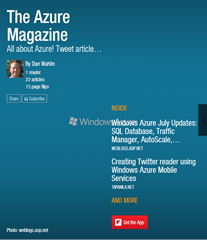Deploying ASP.NET Applications to Medium Trust Servers
99% of the projects my company works on for clients are deployed internally to an enterprise environment managed by a company. We rarely have to worry about deploying to a shared hosting environment which is nice. One of the client projects we finished up recently based on ASP.NET MVC, PLINQO and jQuery was deployed to a shared hosting provider for the client and nothing worked initially. Everything worked locally of course even if we hit the hosting provider’s database from the staging server code base. It’s never fun to have development or staging working with the same code failing in production.
After researching the error more we thought it related to data access permissions since we were getting null reference errors as collections were converted to lists (data wasn’t being returned from the database). Finding the root cause of errors in this situation is like finding a needle in a haystack since you can’t attach a debugger, can’t run SQL Profiler or do anything aside from looking at log files, make code changes, FTP the files to the server and see what happens.
After thinking through it more and running several isolated tests we realized it wasn’t a data access error that we were getting (even though that’s what logs led us to believe). With a little research I came across the good old <trust> element that can be used in web.config. It’s not something that I personally have had to use for over 5 years so I completely forgot about it. By placing the following in web.config you can simulate a medium trust environment:
<system.web> <trust level="Medium"/>
</system.web>
Changing the trust level made the staging environment fail with the same error shown on the shared host (which was awesome….rarely am I excited to get an error). We found out that a PLINQO assembly we were using didn’t allow partially trusted calls so we located the source for that assembly, recompiled it to allow partially trusted callers and everything was fine.
Bottom Line/Lesson Learned: If you’re deploying to a medium trust hosting environment you’d be wise to set the trust level to Medium up front to save time and energy down the road.
Subscribe to my Free FlipBoard Magazines: | ||||
 |  |  |  |  |
